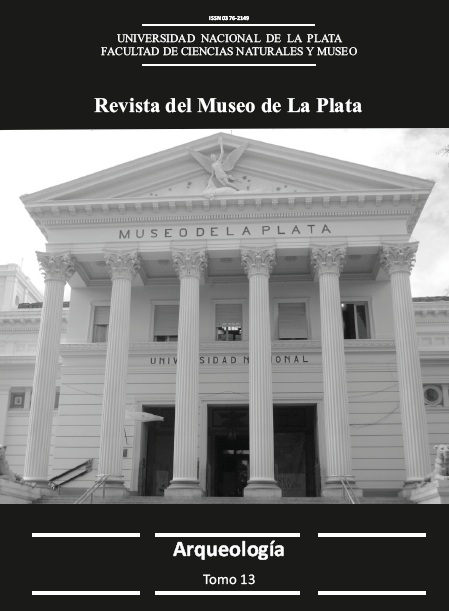Cronología radiocarbónica en paleoambientes del Pleistoceno tardío y Holoceno de la Pampa Deprimida, provincia de Buenos Aires
Keywords:
C Ages, Palaeoenvironments, Late Pleistocene, Holocene, Depressed Pampa, Carbon-14,Abstract
In the Depressed Pampa of Buenos Aires Province, two regions can be differentiated: the continental and the coastal marine plain environments. Geomorphological characteristics and sedimentary sequences of both sectors preserve evidences of the climatic conditions under which they were generated. In morphogenesis periods -in the foodplain of the Salado river- lithostratigraphic units were deposited in the form of fluvio-lacustrine sediments with radiocarbon ages between 14 ka and 0,5 ka in the Late Pleistocene and Holocene. In the coastal marine plain there are deposits of the MIS 1 marine ingression of circa 6 ka, with a later and gradual retreat of the sea. In periods of environmental stability soils were formed. Among them the geosoils Puesto Callejón Viejo and Puesto Berrondo have been individualized and dated on their type sites with radiocarbon ages corresponding to the Late Holocene. The 14C ages in years BP were determined using bones of extinct megamammals, shells of marine and fresh water invertebrates and organic matter from the lithostratigraphic and pedostratigraphic units. The climate during the Late Pleistocene was arid-semiarid. In the Holocene there were alternations to warm-humid. This study provides information on the feasibility of areas for human settlements and for studies requiring contributions of a chrono/lithoestratigraphic nature.Downloads
Published
Issue
Section
License
La publicación en la RMLP se realiza bajo los términos de la licencia de uso y distribución Creative Commons BY-NC-SA 4.0 para Argentina (https://creativecommons.org/licenses/by-nc-sa/4.0/) que permite a terceros la distribución, la copia y la exhibición del artículo siempre que citen la autoría del trabajo, la publicación en la RMLP, número concreto y las páginas en la que encontraron la información. No se puede obtener ningún beneficio comercial y no se pueden realizar obras derivadas con fines comerciales que no autorice la editorial. Si se remezcla, transforma o construye sobre el material, deben distribuir sus contribuciones bajo la misma licencia que el original.
La puesta a disposición del artículo en la RMLP supone para los autores argentinos el cumplimiento de lo establecido en la Ley 26899 de Creación de Repositorios Digitales Institucionales de Acceso Abierto, Propios o Compartidos, del 13/11/2013 en su artículo 5º, en lo relativo a la obligatoriedad de facilitar en acceso abierto los resultados de investigaciones financiadas por agencias gubernamentales y de organismos nacionales de ciencia y tecnología del Sistema Nacional de Ciencia, Tecnología e Innovación.










